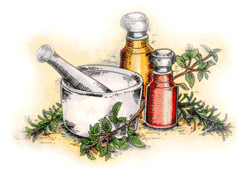 Abdominal Injury Abdominal Injury |
 Achilles Tendon Achilles Tendon |
 Ankle Bone Injury Ankle Bone Injury |
 Ankle Strain Ankle Strain |
 Ankle Synovitis Ankle Synovitis |
 Arm And Shoulder Tenosynovitis Arm And Shoulder Tenosynovitis |
 Arm Contusion, Forearm Arm Contusion, Forearm |
 Arm Contusion, Radial Nerve Arm Contusion, Radial Nerve |
 Arm Contusion, Upper Arm Injury Arm Contusion, Upper Arm Injury |
 Arm Exostosis Arm Exostosis |
 Arm Fracture, Forearm Arm Fracture, Forearm |
 Arm Fracture, Humerus Arm Fracture, Humerus |
 Arm Strain, Biceps Injury Arm Strain, Biceps Injury |
 Arm Strain, Forearm Arm Strain, Forearm |
 Arm Strain, Triceps Arm Strain, Triceps |
 Arm Strain, Upper Arm Arm Strain, Upper Arm |
 Back, Ruptured Disk Injury Back, Ruptured Disk Injury |
 Back Sprain, Lumbo Dorsal Region Injury Back Sprain, Lumbo Dorsal Region Injury |
 Back Sprain, Sacroiliac Region Injury Back Sprain, Sacroiliac Region Injury |
 Back Strain, Dorsal or Thoracic Spine Region Back Strain, Dorsal or Thoracic Spine Region |
 Back Strain, Lumbar Spine Region Back Strain, Lumbar Spine Region |
 Bee Sting Bee Sting |
 Bladder or Urethra Injury Bladder or Urethra Injury |
 Breast Contusion Breast Contusion |
 Breastbone Sprain Breastbone Sprain |
 Burns Burns |
 Buttock Contusion Buttock Contusion |
 Chest Muscle Strain Chest Muscle Strain |
 Collarbone Area Strain, Deltoid Muscle Collarbone Area Strain, Deltoid Muscle |
 Collarbone (Clavicle) Contusion Collarbone (Clavicle) Contusion |
 Collarbone Dislocation - Shoulder Joint Collarbone Dislocation - Shoulder Joint |
 Collarbone Fracture, Outer End Collarbone Fracture, Outer End |
 Collarbone Fracture, Shaft Midportion Collarbone Fracture, Shaft Midportion |
 Corneal Abrasion Corneal Abrasion |
 Dog Bites Dog Bites |
 Ear Injury Ear Injury |
 Elbow Bursitis, Radio-Humeral Elbow Bursitis, Radio-Humeral |
 Elbow Contusion, Ulnar Nerve Elbow Contusion, Ulnar Nerve |
 Elbow Contusion Elbow Contusion |
 Elbow Dislocation Elbow Dislocation |
 Elbow Fracture, Coronoid Process Elbow Fracture, Coronoid Process |
 Elbow Fracture, Epicondyle Elbow Fracture, Epicondyle |
 Elbow Fracture, Lower Humerus Elbow Fracture, Lower Humerus |
 Elbow Fracture, Radius Elbow Fracture, Radius |
 Elbow Fracture, Ulna Elbow Fracture, Ulna |
 Elbow Sprain Elbow Sprain |
 Elbow Strain Elbow Strain |
 Elbow Tendinitis or Epicondylitis Elbow Tendinitis or Epicondylitis |
 Eye Injury Eye Injury |
 Face Contusion Face Contusion |
 Snakebite Snakebite |
 Spider Bites Spider Bites |
 Tick Bites Tick Bites |
|
|
Home :: Collarbone Area Strain, Deltoid Muscle
Collarbone Area Strain, Deltoid Muscle
Injury to the deltoid muscle or tendon that attaches to the collarbone (clavicle). Muscle, tendon and bone comprise a unit. The unit stabilizes the shoulder and allows its motion. A strain occurs at the unit's weakest part. Strains are of 3 types:
- Mild (Grade I) - Slightly pulled muscle without tearing of muscle or tendon fibers. There is no loss of strength.
- Moderate (Grade II) - Tearing of fibers in the muscle, tendon or at the attachment to bone. Strength is diminished.
- Severe (Grade III) - Rupture of the muscle-tendon-bone attachment with separation of fibers. Severe strain requires surgical repair.
BODY PARTS INVOLVED
- Deltoid muscle and deltoid tendon in the collarbone area.
- Collarbone (clavicle).
- Soft tissue surrounding the strain, including nerves, periosteum (covering to bone), blood vessels and lymph vessels.
Causes
- Prolonged overuse of the deltoid muscle-tendon unit.
- Single violent injury or force applied to the collarbone area.
Signs & Symptoms
- Pain with motion or stretching, particularly throwing.
- Muscle spasm.
- Swelling in the collarbone area.
- Loss of strength (moderate or severe strain).
- Crepitation ("crackling") fooling and sound when the injured area Is pressed with fingers.
- Calcification of the muscle or tendon (visible with X-rays).
- Inflammation of the tendon sheath.
Treatment
Follow your doctor's instructions. These instructions are supplemental.
- Use ice massage 3 or 4 times a day for 15 minutes at a time. Fill a large Styrofoam cup with water and freeze. Tear a small amount of foam from the top so ice protrudes. Massage firmly over the injured area in a circle about the size of a baseball.
- After the first 24 hours, apply heat instead of ice, if it feels better. Use heat lamps, hot soaks, hot showers, heating pads, or heat liniments
and ointments.
- Massage gently and often to provide comfort and decrease swelling.
Home Diet
Eat a well-balanced diet that includes extra protein, such as meat, fish, poultry, cheese, milk and eggs. Increase fiber and fluid intake to prevent constipation that may result from decreased activity.
Prevention
- Participate in a strengthening and conditioning program appropriate for your sport.
- Warm up before practice or competition.
- Use proper protective equipment,such as shoulder pads, when appropriate.
back to injuries section
|
|


